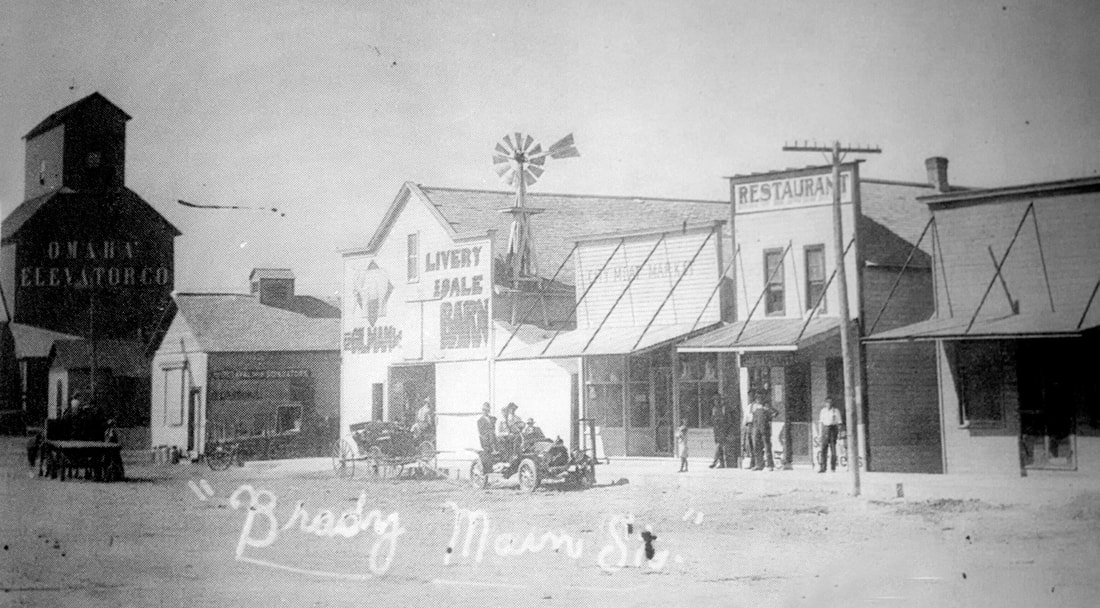Our HistoryBrady was once called Brady Island, given its name by explorer John Fremont. While exploring Nebraska, Fremont found a group of trappers on an island about 20 miles east of the forks of the Platte River. Their leader was a man called Brady, so Fremont marked his map "Brady's Island."
Overland migration west and the Union Pacific Railroad brought many people to the area. In the 1860s, when nearly 1,000 Union Pacific construction workers settled in the area, the town was a collection of tents and soddies along the river. When those workers moved on, only a few families remained. Brady Island was formally laid out in January 1889. Brady Island is said to have the only saloon between Grand Island and Cheyenne for a time and the stockyards, where thousands of head of cattle were brought for shipment, stretched for almost half a mile along the tracks. The first school was formed in 1874 when a group of immigrant families stayed over due to an injury to one of their group. The present school was built in 1925 and has been updated and enlarged several times. Roy Cochran, who graduated with the first class from Brady High School in 1906, became the 24th Governor of Nebraska and served three terms from 1934-40. The present K-12 school district covers a large area, including residents from Jeffery Lake 4 miles south of town. The first church was built in 1892 at the present location of the United Methodist, with a second church built and enlarged in 1925. Sacred Heart Catholic Church was built in 1910 on the south side of the railroad tracks. It is no longer in service. The Berean Fundamental Church, organized in 1954, dedicated its building in 1967. It still operates as the Brady Community Church. The town incorporated in 1907. That's when the name officially changed Brady Island to Brady. There was a weekly newspaper (in 1880, "The Brady Blade" and in 1908, "Brady Vindicator"), a bank, several grain elevators, the usual assortment of shops, a cream station, a pole and neck yoke factory. Electricity was installed in 1914 and could be enjoyed by residents in the evening from 7 to 10 p.m. Fourth of July celebrations were once a big affair in Brady. The Commercial Club sponsored parades, balloon ascensions and street carnivals on Market Street that brought in as many as 5,000 people. Horse races, rodeos and baseball were among the early 1900s recreational activities. Brady is now primarily an agricultural community. We are proud of our little town and lots of volunteer work is done to keep Brady active and attractive. |
